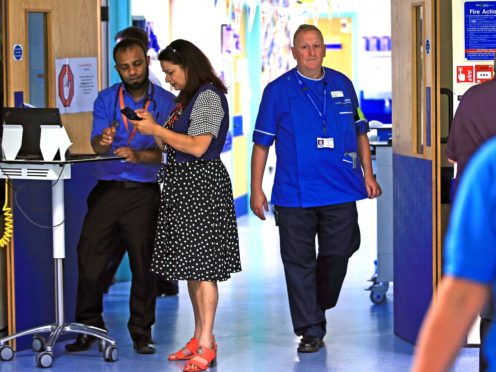Artificial Intelligence can help predict the chances of survival in women with ovarian cancer, new research suggests.
New software, trialled at a London hospital, was up to four times more accurate at predicting deaths than current methods, according to a study published in journal Nature Communications.
It also helped doctors anticipate what might be the most effective treatment for patients following diagnosis.
Ovarian cancer is the sixth most common cancer among women in the UK, with 6,000 new cases every year.
“The long-term survival rates for patients with advanced ovarian cancer are poor despite the advancements made in cancer treatments,” lead author Professor Eric Aboagye, from Imperial College London, said.
“There is an urgent need to find new ways to treat the disease.
“Our technology is able to give clinicians more detailed and accurate information on how patients are likely to respond to different treatments, which could enable them to make better and more targeted treatment decisions.”
The software was created by researchers at Imperial College London and the University of Melbourne, and trialled at Hammersmith Hospital in London.
Normally doctors use CT scans to help them select the most appropriate treatment, but that can’t tell them the likely results of options such as surgery or chemotherapy.
The researchers used a mathematical tool called TEXLab to examine CT scans of tumours and tissue samples from 364 women with ovarian cancer between 2004 and 2015.
The software analysed the structure, shape, size and genetic makeup of tumours, giving patients a score to indicate the severity of their disease.
When compared with the blood tests and current prognosis scores used by doctors, the software was found to be more accurate at predicting deaths from ovarian cancer.
Around 5% of patients who recorded a high score on the scale had a survival rate of under two years.
A high score was also associated with resistance to chemotherapy and poor surgical outcomes.
The researchers suggest it could therefore be used to predict how patients are likely to respond to treatment, and intend to carry out a larger study to test its accuracy.
Health Minister Nicola Blackwood said: “Artificial intelligence has huge potential to revolutionise healthcare by offering more accurate and earlier diagnoses – it could transform the lives of cancer patients in the future.
“We must embrace this type of technology to enable clinicians to provide the best possible care on the NHS which is personalised to individuals.”
